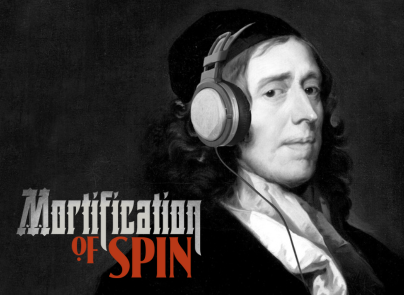Four Views on the Lord’s Supper: Spiritual Presence

In Matthew 26:26-28 Jesus spoke a few simple words that have been the cause of a great many differences between Christians. The differences, or disagreements, are centered upon what Jesus meant when the Bible tells us that:
Now as they were eating, Jesus took bread, and after blessing it broke it and gave it to the disciples, and said, “Take, eat; this is my body.” And he took a cup, and when he had given thanks he gave it to them, saying, “Drink of it, all of you, for this is my blood of the covenant, which is poured out for many for the forgiveness of sins.
Just about every Christian agrees that this is the establishment, or foundation, of the Lord’s Supper. Most even acknowledge that what Jesus is describing here—the practice of coming together as a body of believers to partake of bread and wine—is a practice that Jesus has mandated all Christians to participate in. In fact, for many, the Lord’s Supper is a highlight of corporate worship, wherein the gospel takes a physical and tangible form as the congregation participates in a sacramental meal commemorating all that Jesus has accomplished on behalf of sinners.
So, if the debates that rage are not over what the practice of the Lord’s Supper is to be, where then are the differences? Well, to put it simply, the question that has raised so much disagreement is, “In what way does Jesus mean that the bread is His body, and in what way does Jesus mean that the wine is His blood?” How, exactly, is Jesus present in the Lord’s Supper?
To answer this question, there have been several ideas put forth. The one that was likely the most common during the Middle Ages was the view of transubstantiation, which many Roman Catholics still believe today. This is the view that when the priest blesses the bread and wine, it transubstantiates into the literal body and blood of Christ. This is also why the Roman Catholic Mass is such a big deal—the priest is literally participating in offering up Jesus as a sacrifice to take away the sins of the people.
This view, however, cannot be right simply because it is not biblical. In 1 Peter 3:18, the Scriptures plainly state that, “Christ also suffered once for sins, the righteous for the unrighteous, that he might bring us to God, being put to death in the flesh but made alive in the spirit.” Jesus suffered once. He will not ever suffer again for sinners.
But, is it not possible for the bread and wine to still become the literal body and blood of Jesus when blessed without forcing Jesus to suffer again? The Reformers differed in their approaches. For men like Ulrich Zwingli, the very idea was an impossibility because Jesus is temporally located in Heaven in a physical body, incapable of being present in more than one place at a time. The Zwinglian approach was to view the Lord’s Supper as a memorial and little more.
For men like Martin Luther, however, it was not only possible for Jesus to be present in the Supper, but essential. He disagreed adamantly with the Roman Catholic approach of transubstantiation, but agreed that Christ was truly present in the meal. The difference, however, was in the mode of Christ’s presence, which Luther viewed as being profoundly spiritual. Rather than being physically and locally present in the Lord’s Supper, Luther saw Christ as being supernaturally present in a sacramental union.
Ultimately, Calvin would build upon Luther’s teachings more so than Zwingli’s. In fact, while Luther and Calvin disagreed on the finer points of the Lord’s Supper, it’s possible that if they had been able to meet and discuss these truths together, they may have been able to come to an agreement. After all, Calvin also believed that Christ is truly present in the Lord’s Supper.
Calvin viewed the Lord’s Supper as a sacrament like baptism and understood a sacrament to be a visible sign and seal of something promised by God. For Calvin, then, the Lord’s Supper is a sacramental sign that confirms the believer truly does partake of the Lord’s body and blood. So, while the bread and wine do not become the physical body and blood of Christ, for the Christian, the bread and wine become signs of the body and blood of Christ. While no transubstantiation takes place, there is—like Luther taught—a way in which the Holy Spirit applies the benefits of Christ’s body and blood to the saint.
According to the spiritual view, Christ is truly present by means of the believer’s union with Christ through the Holy Spirit. By faith, the believer partakes of all the benefits of Christ’s body and blood. After all, as Jesus said,
Truly, truly, I say to you, unless you eat the flesh of the Son of Man and drink his blood, you have no life in you. Whoever feeds on my flesh and drinks my blood has eternal life, and I will raise him up on the last day. For my flesh is true food, and my blood is true drink. Whoever feeds on my flesh and drinks my blood abides in me, and I in him (Jn. 6:53-56).
For those who hold to the spiritual view of the Lord’s Supper, Jesus is truly present, and these benefits are truly enjoyed by means of the Holy Spirit and believer’s union with Christ.
Jacob Tanner is the pastor of Christ Keystone Church in Middleburg, PA. He is married to his wife, Kayla, and together they have two sons, Josiah and Owen. He is the author of The Tinker’s Progress: The Life and Times of John Bunyan, Wait and Hope: Puritan Wisdom for Joyful Suffering, and Resist Tyrants, Obey God: Lessons Learned from the Life and Times of John Knox.





